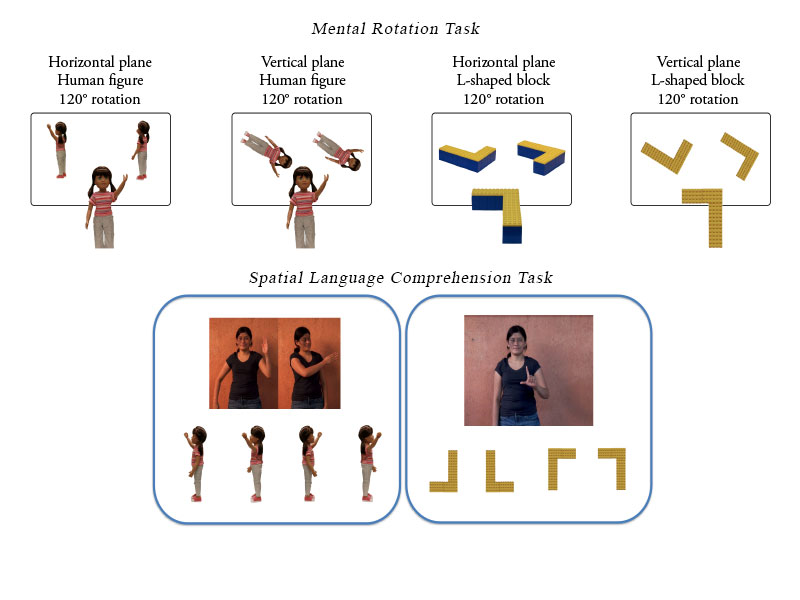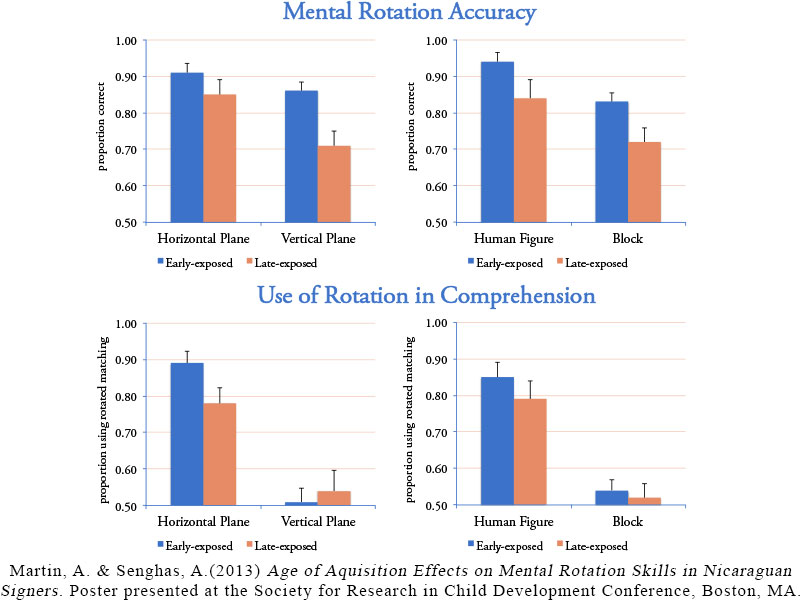

This project explores how language systems and cognitive systems interact. Specifically, how do the spatial aspects of sign language reflect the way humans think about space? And how might learning and using a three-dimensional language affect that thinking? Are there aspects of sign language that make us better able to perform spatial operations, like imagining things rotating in space? We are particularly interested in how this interaction develops and changes over the lifespan.
This project stems from Amber Martin's dissertation study that examined mental rotation in adult users of American Sign Language. Dr. Martin found that people who learned ASL when they were very young are
accurate than non-signers in detecting differences between pictures that are rotated to different degrees. Now we are examining how mental rotation skills develop, and whether the specific spatial devices in a language influence the three-dimensional mental rotation skills of its users.
The project also examines the direction of these effects in children learning sign language at various ages. Must children develop sufficient non-linguistic mental rotation skills before they can master spatial linguistic devices? Or, does learning a sign language facilitate the development of nonlinguistic mental rotation skills?

